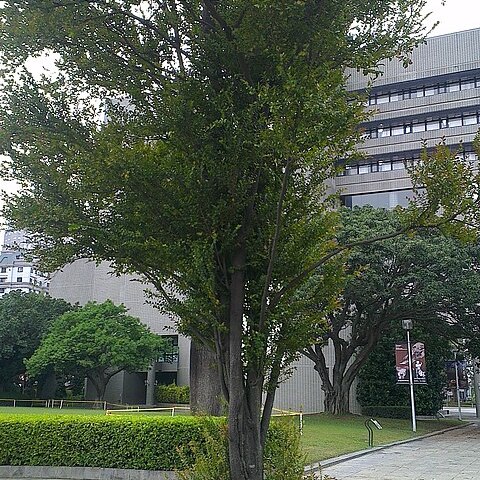Shrubs 1--2 m tall, evergreen, much branched; young branchlets, leaves, and winter buds rusty pilose-pubescent. Branches glabrescent. Petiole 1 mm, rusty pubescent, glabrescent; leaf blade elliptic to obovate, 2--4 X 0.9--1.5 cm, leathery, abaxially pubescent along midrib when young but glabrous when mature, adaxially lustrous, base obtuse to rotund, margin often pilose-ciliate, apex subacute and mucronate, lateral veins ca. 5 or 6 per side, veins inconspicuous or slightly impressed. Male flowers solitary or in cymes, subsessile; calyx divided nearly to base, ± as long as corolla; calyx lobes 4, narrowly lanceolate, brown pilose; corolla campanulate, ca. 4.5 mm; corolla lobes 4, spreading, ovate, as long as tube, midrib thinly pilose, apex acuminate; stamens 16. Female flowers solitary; calyx and corolla similar to male flowers; staminodes 4--8, linear; ovary glabrous. Fruit solitary. Fruiting pedicel 1--2 mm, puberulous. Fruiting calyx deeply divided, glabrous; lobes 4, spreading to gently recurved, triangular-lanceolate, ca. 5 mm. Berries black, globose, ca. 1 cm in diam., glabrous. Seeds (1 or)2(or 3), dark brown, ± hemispherical with a small beak, ca. 8 X 6 X 4 mm, minutely rugulose. Fl. May, fr. autumn and winter.
More
A shrub. It grows 1-2 m tall. It has many branches. The young branches and leaves have a rusty coating of hairs. The leaves are 1-4 cm long by 1-1.5 cm wide. They are leathery and have hairs underneath. The base is round, there can be hairs along the edge of the leaf and there is a sharp tip. The male flowers can occur singly or in groups and have short stalks. The female flowers occur singly. The fruit are black berries that are round and 1 cm across. They usually have 2 seeds.


